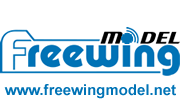How to make a New Small RC AitPlane by ourself
New User, RTF, Ready To Fly
Aeromodelling is the art of designing, building and flying model airplanes, helicopters and multicopters. These models might be powered or unpowered. Powered aero-models use Electric Motors, IC Engines or Jet Engines to generate thrust to make them fly.
Flying models borrow construction techniques from full-sized aircraft. Model aircrafts are built using a variety of materials including paper, foam board, depron, balsa wood, coroplast sheets or composite materials like fiberglass or carbon fiber.
In this tutorial, we will be building a radio controlled model airplane using foam board. This RC Plane is easy to build and fly. It is also a good platform for beginners to learn about flying. You can also skip to check the build video tutorial of the RC plane by scrolling down this page.
Required Materials
1. Motor: CF 2822, 1200 KV Electric Motor
This Products is available in stock.
This Products is available in stock.
This Products is available in stock.
we will ship the package within 48 hours after the buyers pay money by paypal
2. ESC: 30 Amp Electronic Speed Controller
3. Propeller: APC 8 x 4 Inch Electric Propeller
4. Battery: 11.1 V, 3 Cell, 1300mAh Lithium Polymer Battery
5. Servos: 9 grams Servos x 2
6. Battery Charger
7. Depron/ Coroplast/ Foam Board
8. Lite Ply (for Motor Mount)
9. Radio Transmitter and Receiver
10. Cycle Spokes(1.5mm/ 2mm) as Pushrods
11. Clevis x 2
12. Control Horn x 2
13. Linkage Stopper
14. Hobby Knife/Blade
15. Epoxy 5 min (Araldite)
16. Hot Glue Gun and Hot Glue Stick
17. Glass Fiber Tape 3.5 mm Nuts and Bolts
18. Screw Driver Set
19. Nutball Plane Plan (by Flitetest)
RC Plane Specifications
Wingspan: 20 inches
Length: 22 inches
All Up Weight: 425 grams
Center of Gravity: 5 inches from the Leading Edge of wing
How Does it Work?
Gravity, Lift, Thrust and Drag are the forces acting on an airplane in flight (Fig. 1). Maintaining a steady flight requires a balance, often described as equilibrium of all the forces acting upon an airplane. By varying this equilibrium, we can make the plane accelerate forward, upward, downward, etc.
Wings - DIY Hacking
Fig.2 Bernoulli��s Principle
The thrust for our aircraft is provided by an electric motor and the wings generate the lift. The shape of the wings and the aerofoil decides the lift generation. The lifting force is provided by the difference in the pressure of air flowing above and below the wing and is governed by Bernoulli��s principle (Fig. 2). Here, we are using a flat bottom, Kline�CFogleman airfoil.
Build Video/Tutorial
Printing the RC Plane Plans and Getting the Parts Ready
RC Plane - DIY Hacking
In this step, we lay out the plan that we printed before and tape the sheets together as shown in Fig: 1.1
We then take the full plan and lay it out on the foam board and cut the foam board accordingly to get the required parts as shown below Fig: 1.2
Also, cut the motor mount out of Lite Ply and drill holes as required by your motor (Fig 1.3).
Building the Power Pod and the Wing
RC Plane - DIY Hacking
Fuselage Setup
To build the Power Pod (fuselage), start by cutting the foam on the red line and remove the foam in-between the lines as shown in Fig 2.2. Fold the sides of the pod together and run a bead of hot glue to keep them firmly in place. Glue the Motor Mount that we have cut, to the front end of the fuselage with epoxy (Fig 2.3). Bolt on the motor to this mount using the 3.5 mm nuts and bolts (Fig 2.4).
RC Plane - DIY Hacking
Wings Setup
The next step is to build the wing of the aircraft. Cut half way through the foam on the red line so that the foam can easily bend on the line. Cut a bevel edge on the elevator so that it can move freely. Cut all the necessary notches(marked in black) for the servos, tail fin and power pod to fit into the wing. Fold the sides of the wing, so that its tips are pointed upwards at 1.5 inches (Fig 2.6, 2.7). This provides stability during flight.
We will next cut a bevel edge on the tail fin so that the rudder can move freely (Fig 2.8). Then, we glue the tail fin into place on the wing.
RC Plane - DIY Hacking
We use Glass Fiber tape and hinge the tail fin and rudder together. We then install the servos in place, which are necessary for controlling the elevator and rudder of the plane.
At the end of this step we will have four parts.
Wing
Power Pod
Tail Fin
Motor Mount
Assembling the Airplane
RC Plane - DIY Hacking
Once we have the Wing and Power Pod ready, we go ahead and glue them together as in Fig 3.1. Then, we install the control horn on the elevator and run a control rod from the servo to the elevator��s control horn as in Fig 3.2. We follow the same step for the rudder (Fig 3.3).
Installing the Electronics
RC plane tutorial for beginnersWe now install the RC receiver, battery and ESC into the Power Pod as shown in Fig below. And connect your servos to the receiver as in the below wiring diagram. Note the channels you use for each servo and control them correspondingly from the transmitter. Now your RC Plane is all set for flying :)
RC Plane - DIY Hacking
Flying Your New RC Plane
We will use a Radio Controlled Transmitter working on 2.4 GHz frequency to fly this airplane. I highly advise beginners to learn flying on a simulator, before actually flying the airplane.


